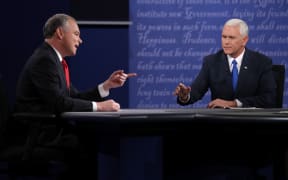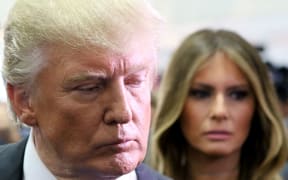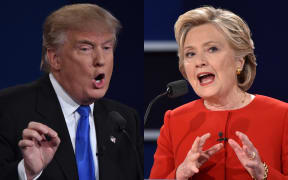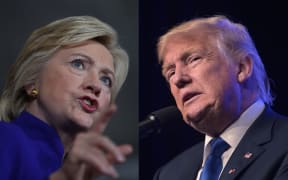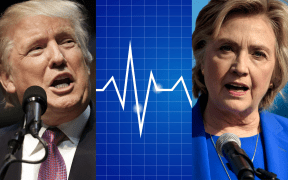Opinion - No matter what skeletons fall out of Donald Trump's voluminous closet, no matter what gob-smacking gaffe escapes his lips; his support sits stolidly in the low 40s of most polls. Who are this group and, particularly, who are the core fans who have cheered on his bandwagon throughout the campaign? And why do they love him?
Like everything interesting, it's complicated. But I will attempt a who or two, a couple of whys, and a how.
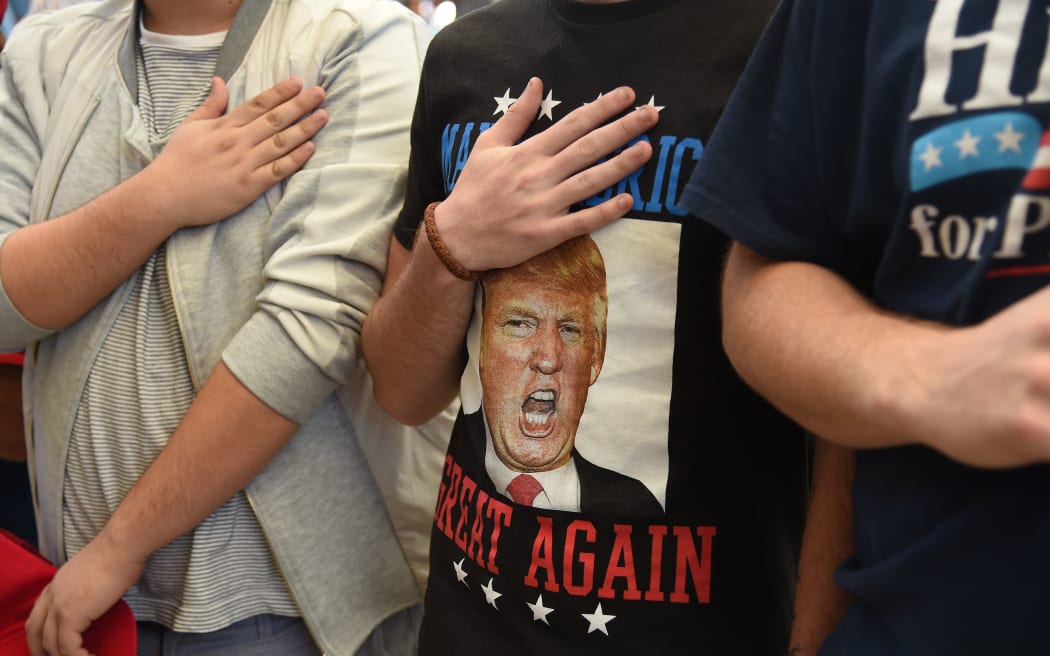
Supporters hold their hands over their hearts as they say the pledge of allegiance at a campaign rally by Republican presidential candidate Donald Trump, at the Henderson Pavilion, 5 October, in Henderson, Nevada. Photo: AFP
The usual suspects
The American populace includes many distinct electorates, some demographic, some issue-based, and even within a party some are mutually exclusive.
The Republican party (to generalise) is a diverse coalition of economic conservatives, old testament Christians, moral conservatives, southern racists, isolationists, military hawks, libertarians, deficit hawks, businessmen, baby boomers and married suburban women.
There are also local and historical elements, like Cubans in Florida. Most of the 17 candidates in the Republican primary were champions for one or more of these electorates.
These groups tend to vote Republican regardless of whether the candidate supports their personal issue or demographic, because supporting the Democrat is unthinkable. So, within Mr Trump's broader caucus are groups who plan to hold their nose while they vote. Some of these are the fringe support that Democrat presidential nominee Hillary Clinton is trying to dishearten or poach, especially the women.
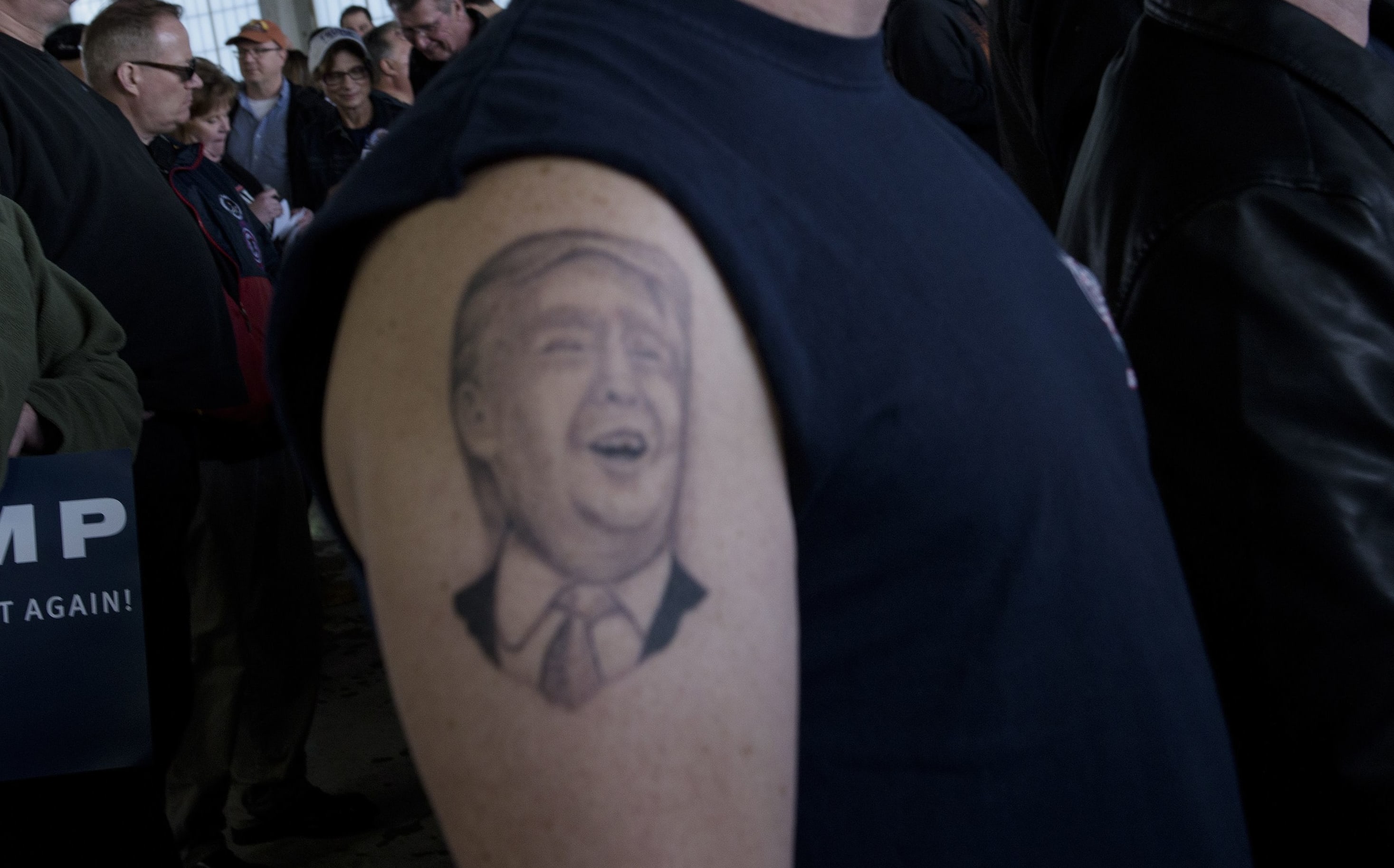
A tattoo of US Republican presidential hopeful Donald Trump on a supporter's arm. Photo: AFP
The new who
There is also a core of Trump believers, the fervent, even rabid ones that attend the rallies and wear t-shirts that say "Hillary for Prison" or "I wish OJ had married Clinton". They come from somewhere else. Here's a short illustrative story, with thanks to political scientist Kyle Kondik, who wrote The Bellwether:
Amongst Ohio's crazy-paving map of 88 counties, two are identical in many ways. Trumball county is up on the Pennsylvanian border in an area often called Steel Valley. Delaware county is smack in the middle of Ohio, just north of the bustling capital, Columbus. Both counties have about 200,000 residents, a lot of German ancestry and are 90 percent white.
So far, so similar. But politically and economically things are very different. Industrial Trumball is Democrat and voted 60/40 for Barack Obama in 2012. Republican Delaware split 60/40 for Mitt Romney. Industrial Trumball is tanking economically, with more than twice the unemployment and half the median income of Delaware. Its population has shrunk by nearly 10 percent since 2000. Meanwhile, Delaware has grown 75 percent and has three times the tertiary education level. Ohio's Steel Valley shows why the once-thriving northern lakes area of the US is now called the Rust Belt.
So, in the Ohio Republican primary which of these counties voted for Mr Trump? A clue - it wasn't the Republican county that is economically strong, well-educated and growing. Delaware was Mr Trump's worst Ohio result (21 percent), Trumball was his best (52 percent).
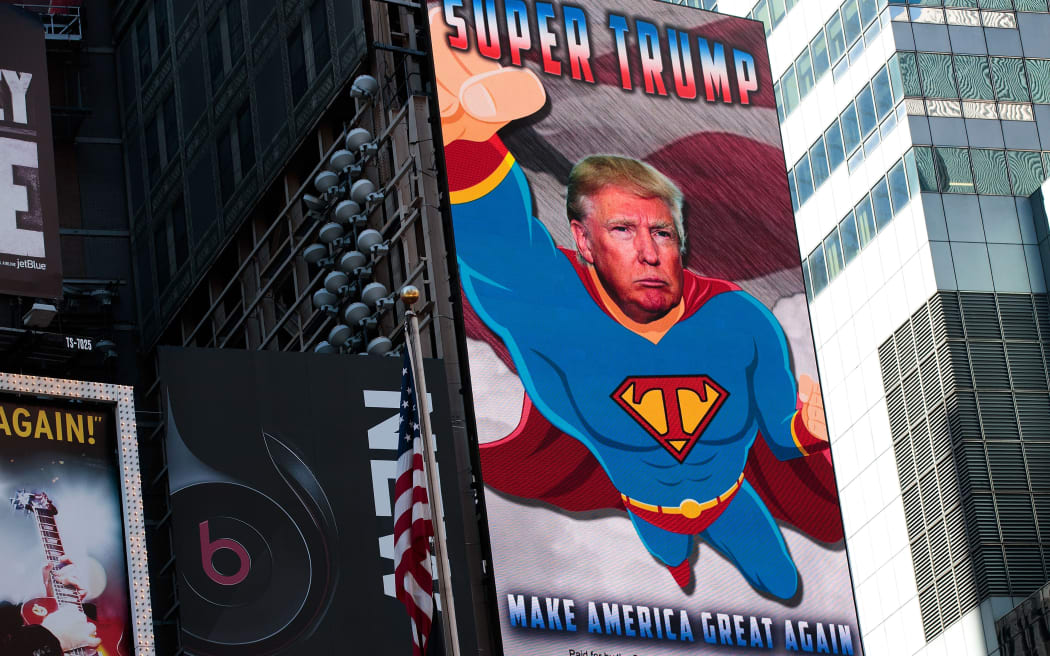
A digital billboard supporting Donald Trump in Times Square depicts him as 'Super Trump', September 15, 2016 in New York City. Photo: AFP
Nothing but grey skies
The difference is prospects.
In The Gilded Rage, Alexander Zaitchik spent months talking with Trump supporters across the USA. The conversations are telling and vary a little by state. In most places the xenophobia is palpable, but it's usually expressed in economic terms. There is also significant bigotry and sexism and everything else in the 'basket of deplorables'. But a strong underlying driver appears to be prospects.
Stanley Stockdale, a cancer-ridden former Pennsylvania coal miner told Zaitchik, "I believe if [Trump] takes office, the economy is going to change. My biggest and only concern with him is he may create World War III". He thinks Mr Trump is arrogant, crass and a borderline bigot, but in a struggling region, the economy is more important to him. And patently, from his perspective, it's all gone wrong.
Akin to the English midlands during the Brexit referendum, the working class in the former industrial heartlands see a bleak future and are grasping at populist straws as a remedy.
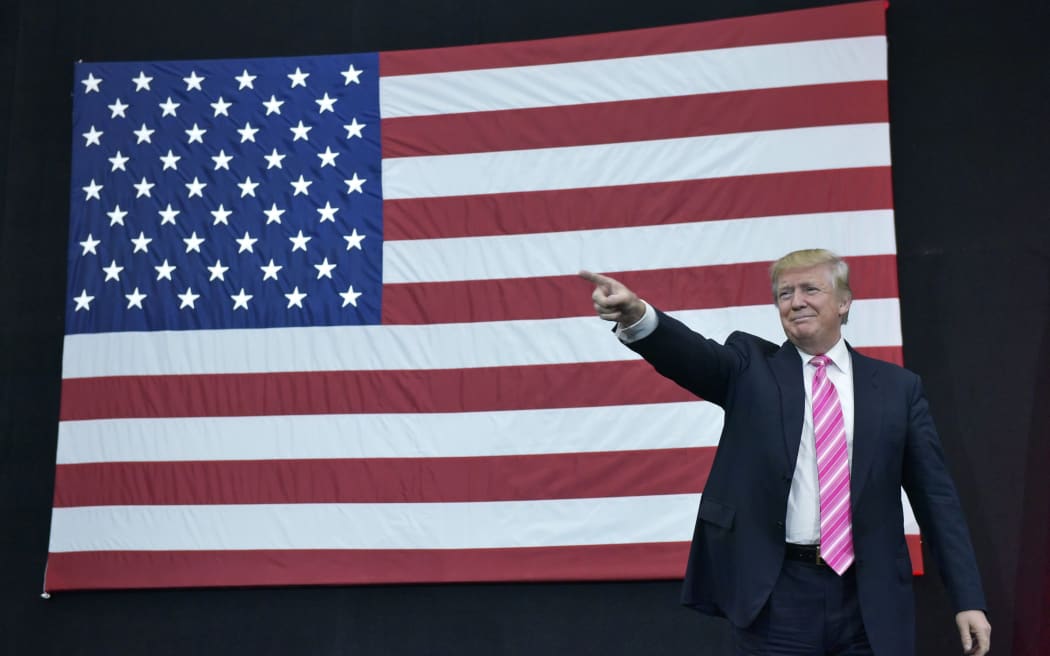
Photo: AFP
I can't keep up
Donald Trump's "Make American Great Again" is the dark parallel of Barack Obama's "Hope" message from 2008. Mr Obama was appealing to the new Democratic coalition: ethnic minorities, the young, the gay, the educated, new testament Christians, new industries, greens, feminists and unmarried women.
This is the coalition of the ascendant. For many the rise has been towards equality rather than dominance, but they are perceived by the disenchanted, uneducated, unemployed blue collar workers as the new favourites; as those who have taken their place as king of the hill. The good old days that Trump harks back to were a time when working men were on top.
There has been a lot of change. Baby boomer Americans have lived through desegregation, gender equality, environmentalism, LGBTQ equality, trade liberalisation, drug legalization, the rapid decline of religion, the decline of 'masculinity', and in some places a rapid shift in racial demographics. For voters from the south, the change has been particularly jarring.
Even small changes can have palpable electoral impacts. Consider the religiously conservative communities of South Auckland that blame the Labour Party for prostitution reform and the anti-smacking legislation and have yet to fully return to the ballot booth.
Misattributed blame is all the more plausible at a remove. The strongest Brexit resentment towards immigrants was in areas with no immigrants. Similarly, in overwhelmingly white Trumball the Mexican threat is more believable than it is in California. In rural South Carolina the transgender toilet law seems so much more important than in New York, where the LGBTQ community is your neighbour, not an unseen bogeyman.
Other groups have slightly different motivations. Apparently half of evangelicals see Trump as just the kind of hard man needed to bring about the second coming of Christ. Yes, seriously. The Trump believers are not lacking in extremists, oddballs and conspiracy theorists.
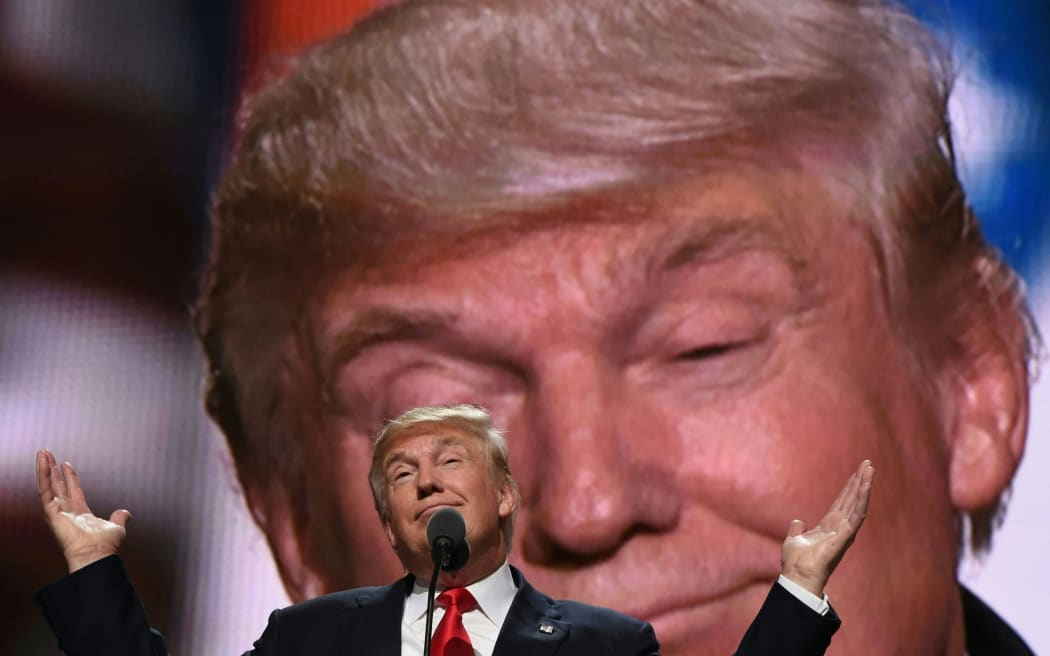
Photo: AFP
The classic how
Trump's message works because it follows the basic method of all successful demagogues:
A simple message,
in simple language,
provide an 'outsider' scapegoat,
promise miracles,
and never mind the truth.
It's harder than it sounds.
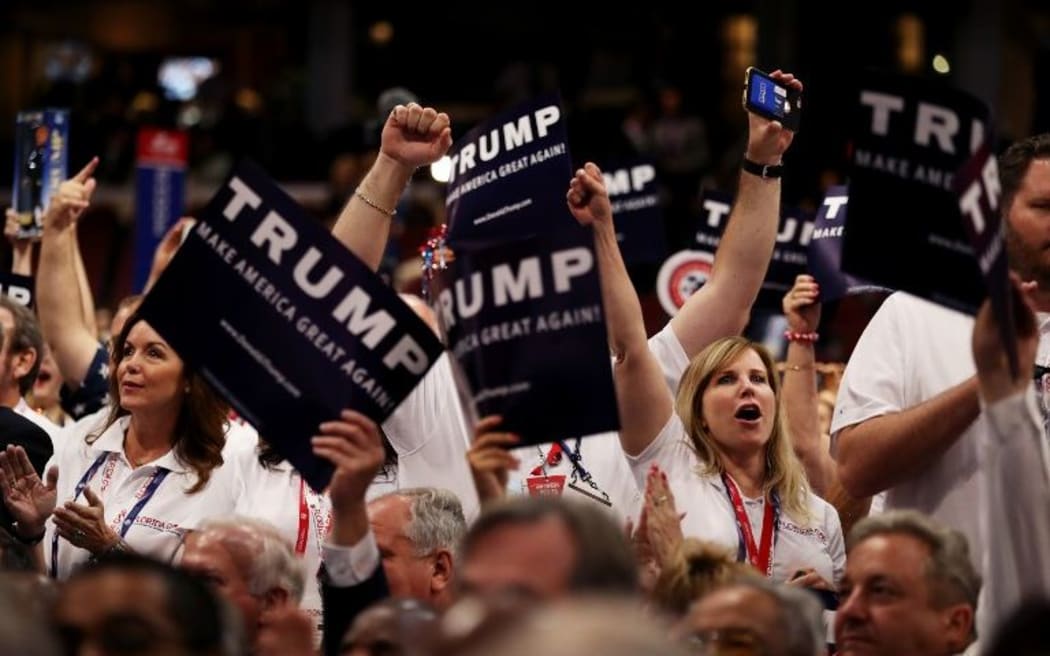
Delegates hold signs in support of Donald Trump during roll call at the Republican National Convention. Photo: AFP
The outcome
The mathematics of the Trump campaign is that there are many more white folk than ethnic minorities. The Republicans dominate the white vote (58/30), especially uneducated white men who were once firmly Democratic. Uneducated white men are a full 20 percent of the population, which in a country with low turnout is a powerful voting block. The difficulty is getting them to turn up and vote in the numbers necessary.
In 2012, Barack Obama won by five million votes - but 24 million uneducated white men didn't bother to vote. Many aren't even registered. A WP/ABC poll in August found that 62 percent of uneducated white men were absolutely certain they would vote, while 90 percent of educated white women were absolutely certain they would.
Many more would need to turn up and vote for Donald Trump's coalition of the aggrieved to see victory. Currently that seems unlikely.
